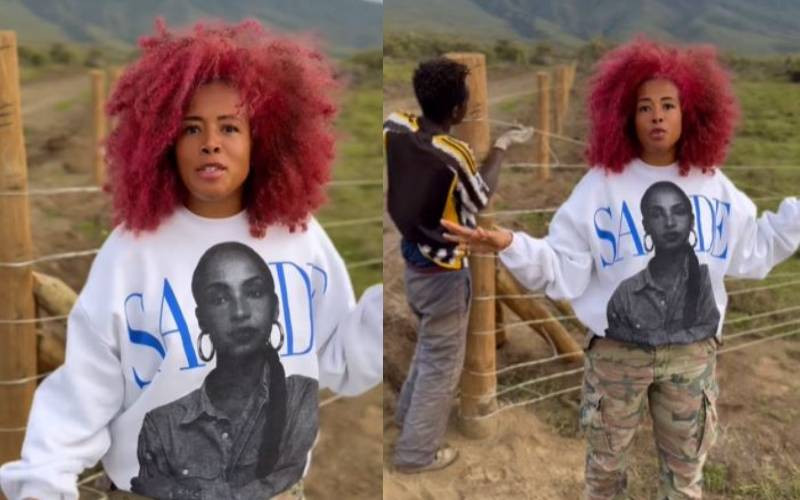
For more than a decade, Ohangla music has been churning out new artists, songs and audiences after being popularized around 1992 by two brothers – Jack and Tony Nyadundo.
Ohangla, which is a growing popular genre among the Luo community, has evolved from a village ritual jig to an urban mass entertainment attracting thousands of fanatics.
In his book Shades of Benga, veteran rhumba producer Tabu Osusa describes Ohangla as a rural hip hop and an innovation of young creative musicians who could not afford the costs of a fully-fledged band.
While some observers believe that the adoption of piano by Ohangla musicians is fading the guitar very fast, benga enthusiasts argue that it remains an all-time distinct rhythm.
Two weeks ago, benga got a new lease of life following the colourful launch of the “Hera Oyuma” album by Otieno Jamboka.
For more than eight hours, benga and rhumba fans were treated to an electrifying non-stop performance by Oginga Wuod Awasi, Ongoro Jakarachuonyo, Omondi Mc Ngoe and Berhumba International Band.
When Ongoro stroke the first note of the Jamnazi Africa’s hit song ‘Riziki’, the crowd at Da Vundu bar in Kisumu went frenzy. When they dropped a line from ‘Am not sober’ song, the crowd could not help but hum along.
Jamboka, who is popularly known for his songs Chien’g osepodho, Doro Nyausonga, Hera Oyomba among others, proved that benga is a time-tested music genre that will not die anytime soon.
His new album Hera Oyuma includes Awuor Mbojni, Mama Kassim, Nyar gi jo rhumba and Eng Wasonga.
Jamboka’s launch comes barely a few weeks after Mc Ngoe, the new Luo benga sensation dropped another hit -‘Humb Jaluo’
The song which was released last month is not only entertaining but also gives the Luo’s migration history and the role they have played during and post-independence.
In the song, the artist praises devolution while urging Luos to invest and develop their respective counties.
In March this year, Ngoe unveiled three releases; Hera mar Mbese, Weche Mapenzi and Martin Shikuku. These add up to his first songs like Judy Nyowila, Marcellina, Nyar Alego Agulu, Phyllis Anyango, Nyar Kirinyaga, Beryl Nyausonga and Rumo Kitam.
“In order to come up with a highly danceable, properly arranged, educative and entertaining song and any musician should always take his/her time,” he advises.
Even though he is still new in the industry, Ngoye’s hits have become popular requests from fans in entertainment joints and vernacular radio stations across the region.
“I do a lot of research before hitting the studio to produce any song because the beats will fade away, but the message will live longer,” he explains.
But despite Ngoye’s ambitious effort to keep benga alive, there have been attempts to challenge to challenge the music, with many musicians venturing into Ohangla and even gospel.
“It is true that many upcoming artists have resorted to Ohangla genre. My mission is to keep benga and rhumba music alive,” says Ngoye, adding that benga music will still continue to be appreciated by generations to come.
Based in Nairobi, Ngoye says he looks forward to nurturing young talents in the entertainment industry.
Legendary benga maestro Osito Kalle in an interview with Sunday Standard, argues that benga was there before Ohangla.
He says that benga is seen to be fading because most of the young people have opted to go for other genres like Ohangla, hip hop, reggae and even rhumba.
“Most of those who were playing benga are now too old and the fans are also too old to go to the clubs to dance,” says Osito, who adds that he is not retiring from benga anytime soon.
The veteran musician, who also plays guitar, argues that the young generation is shying away from benga because it is expensive, requires proper planning, research and time in order to produce.
Aluoch Jamaranda, another benga legend says that apart from the invasion of the industry by Ohangla, split in music bands has greatly contributed to the waning fortunes of benga music.
He adds that the shrinking number of benga music composers is also another challenge in the life of the music genre.
“Lack of creativity and playing copyrights is another contributor to the poor ratings in the industry,” he says, adding that there is no shortcut in benga music apart from regular practice.
He adds, “Regardless of what people say, I strongly believe this is the kind of music that has and will still continue to be appreciated by generations to come.”
Milton Ongoro, another musician maintains that benga music has a future and requires young people with interest in the genre to move it forward.
“In the music industry, there is nothing like nurturing new talents. It is all about showing interest and working towards that. You can do this within a band or outside,” explains Ongoro.
 The Standard Group Plc is a multi-media organization with investments in media platforms spanning newspaper print
operations, television, radio broadcasting, digital and online services. The Standard Group is recognized as a
leading multi-media house in Kenya with a key influence in matters of national and international interest.
The Standard Group Plc is a multi-media organization with investments in media platforms spanning newspaper print
operations, television, radio broadcasting, digital and online services. The Standard Group is recognized as a
leading multi-media house in Kenya with a key influence in matters of national and international interest.











